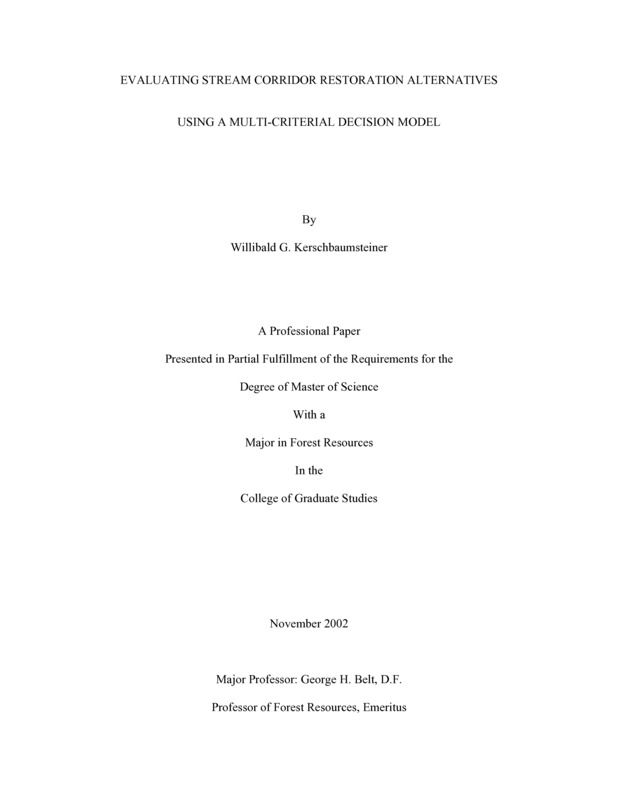PDF PREVIEW
Evaluating Stream Corridor Restoration Alternatives Using a Multi-Criterial Decision Model Item Info
Download Preview PDF
Please note: PDF file may not be complete document.
- Title:
- Evaluating Stream Corridor Restoration Alternatives Using a Multi-Criterial Decision Model
- Creator:
- Kerschbaumsteiner, Willibald G.
- Date Created:
- 2002-11
- Description:
- Stream corridor restoration is of growing concern in the United States and worldwide due to the increasing use of freshwater resources and the extensive degradation of stream corridors and wetlands. Hence, there is a real need for stream-corridor restoration projects and techniques for formulating and evaluation alternative restoration strategies. The paper presents a straightforward decision model for stream corridor restoration that employs a goal-based methodology and a multi-criteria technique, utility analysis, as aids in decision making. Utility analysis allows consideration of ecological, socioeconomic, and recreational goals, without monetary valuation, using a subjective weighting system. The Rosgen Stream Classification system is used for estimating changes in stream condition from the current condition to the desired future, or restored condition. The importance of the decision model as an aid to, rather than a replacement for, professional judgment, is highlighted. The decision model is particularly suited for applications where a readily explainable technique is required but time, funding or professional expertise are limited. A case study of stream corridor restoration in Northern Idaho, USA is included for clarity.
- Document Type:
- Thesis
- Subjects:
- East Hatter Creek stream corridor restoration multi-criterial decision model forest ecology
- UIEF Unit:
- East Hatter Creek
- Location:
- UIEF; East Hatter Creek
- Latitude:
- 46.840526
- Longitude:
- -116.780027
- Department:
- Department of Forest Resources
- Type:
- Text
- Format:
- application/pdf
Source
- Preferred Citation:
- "Evaluating Stream Corridor Restoration Alternatives Using a Multi-Criterial Decision Model", UIEF Research Exchange, University of Idaho Library Digital Collections, https://www.lib.uidaho.edu/digital/uief/items/uief_0045.html
Rights
- Rights:
- In copyright, educational use permitted.
- Standardized Rights:
- http://rightsstatements.org/vocab/InC-EDU/1.0/

